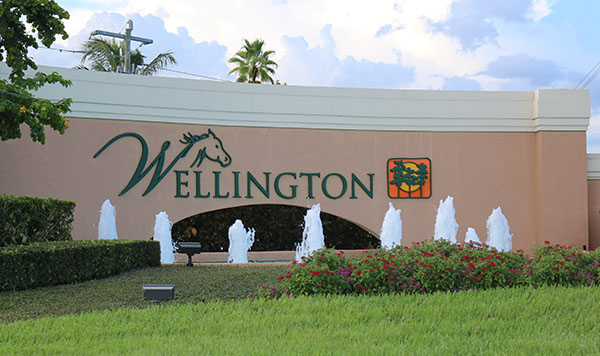A disagreement years in the making is winding its way through the court system. The end result could be the Village of Wellington assuming ownership of the controversial Big Blue Preserve.
The Big Blue Preserve is a 92-acre Cypress hammock, the largest remaining stand in South Florida, and an important environmental conservation area frequented by many native animals. It is surrounded by the Palm Beach Polo community and owned by Glenn Straub.
The fact that it is preserve land on private property has been a difficulty for the village, and a bone of contention with Straub, dating back nearly to Wellington’s incorporation.
After accruing more than $6 million in code enforcement fines, the Village of Wellington has now taken action to foreclose on the property.
“We have just filed a motion for summary judgment on the matter,” Village Attorney Laurie Cohen said. “It has to be set for hearing, and if the court enters judgment in our favor, it will schedule a sale of the property. I would say the whole process could take up to six months, but it is always possible that the court could deny the motion for summary judgment. If that happens, then we will have to have a trial. That would likely take longer. It’s very hard to estimate the timeline at this point.”
The current situation began when the village acted to enforce land development regulations and PUD master plan regulations some 15 years ago.
“The preserve and Polo are the successor to the developer, and is, therefore, bound to the PUD,” Cohen said.
She said that in a 2004 court order, the owner was required to submit a restoration plan and a habitat plan for the entire preserve. The village filed comments on the plan, and the owner never responded to the comments.
Cohen continued that just over five years ago, Straub clear-cut some 4.5 acres of preserve land. The village stopped further such action with a code enforcement suit, and the magistrate ordered that the measure be rectified with a daily fine applied, which was upheld by an appeals court. That fine now amounts to about $6.5 million.
While it is hard to put a price on environmentally sensitive land, often referred to as a treasure, the magistrate does, and the parcel in question isn’t worth the $6 million owed.
“The 4.5 acres won’t cover the fine, so we are foreclosing on the entire preserve,” said Cohen, who added that if the village wins the summary judgment, there are no other junior lien holders.
Cohen said that if the court allows the foreclosure, someone can buy the parcel at auction for the amount of the fine plus as little as $1, if they outbid other potential purchasers. “They used to auction on the courthouse steps; now it is done electronically,” she said.
In a judicial sale, the buyer would get legal, clear title to the land. But the parcel’s future is not in legal jeopardy. “The buyer would still be the successor to the developer and is still bound to the PUD, which states the land will be protected in perpetuity,” Cohen said.
However, Wellington is not expecting to actually take ownership, although it is a possibility.
“I don’t think it will come to [an auction],” explained Cohen, who said she suspects the owner will bond off the lien and work to resolve the matter. “We are always happy to resolve an issue.”
Often the village accepts a reduced fine of no more than 80 percent of the total. More can be recommended by the council if it were so inclined, but the final decision is made by the magistrate.
The problem with the situation at Big Blue is that a property is only eligible for a fine reduction if it is in compliance, and the destruction to the clear-cut portion has not yet been rectified, so compliance has not occurred. “A reduction has never been requested by the owner because they are not in compliance,” Cohen said.
If the ownership of the preserve does change hands, it would mark a major shift for a site that early Wellington pioneer A.W. “Bink” Glisson vowed should be preserved forever. The preserve has always been privately owned. If it falls into public hands, it could become available for the public to visit.
“It is not open to the public. If residents who live adjacent to it go into it, they are trespassing,” said Bob Basehart, Wellington’s planning, zoning and building director throughout much of the Big Blue controversy. “It is a natural preserve and should be maintained. It presents a burden from a landowners’ point of view because it is fairly costly [to maintain].”
Alec Domb, Straub’s attorney, could not be reached for comment regarding the foreclosure case.








